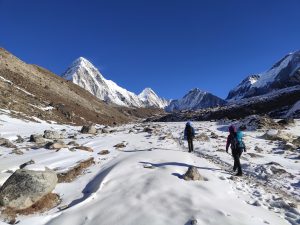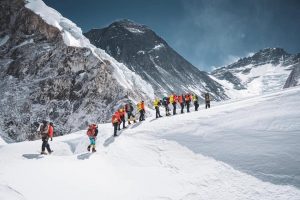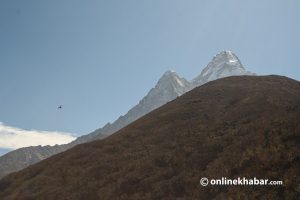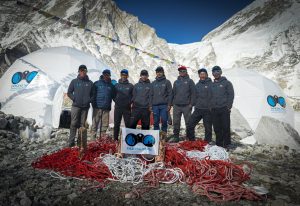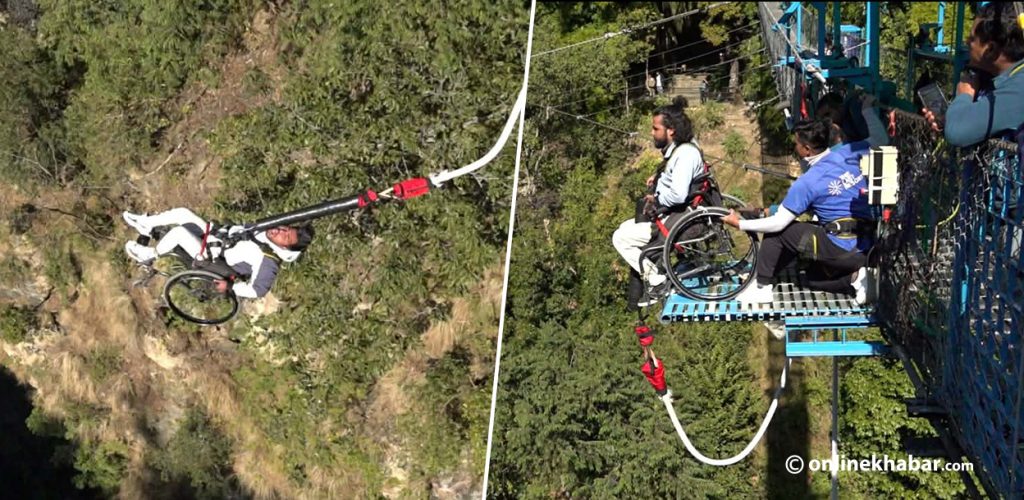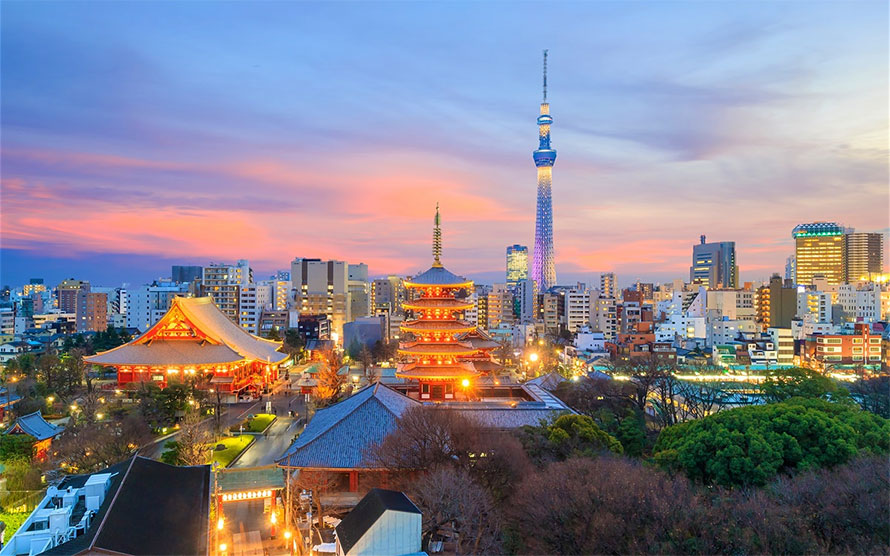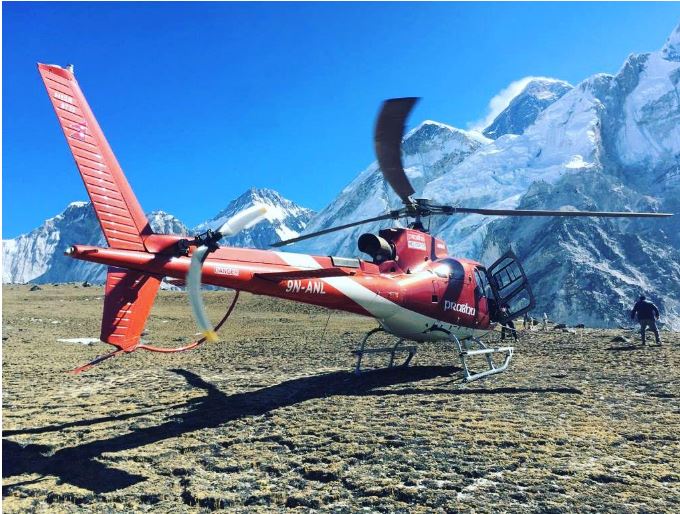
The latest incident involving an Australian YouTuber, who had to be medically evacuated from the Everest region after a reckless helicopter stunt, has brought new life to the raging controversy over the increasing helicopter tourism industry in the Himalayas.
The social media personality, known as ‘Spanian’, reportedly flew directly into a high-altitude hotel without acclimatization, leading to a severe episode of altitude sickness that necessitated an emergency helicopter rescue. This accident serves as a sobering reminder of the risks of taking the world’s tallest mountain lightly and has cast a harsh glare on the “quick-fix” culture of ascending Everest, a sport that many critics argue comes at a significant cost to the environment, local communities, and the very essence of mountaineering.
The allure of Everest Base Camp Helicopter trek without the grueling multi-week trek is a tempting one, and a growing number of tourists are opting for helicopter tours that provide breathtaking vistas in a fraction of the time. But this convenience comes at the expense of a reckless dismissal of the risk involved in high-altitude environments.
Spanian’s case, where described symptoms of dizziness, shortness of breath, and extreme cold shortly after his arrival at the Hotel Everest View, is a textbook case of what can happen when the body is not given time to acclimatize to the thin air. His subsequent emergency evacuation underscores the strain that such ill-prepared ventures place on rescue services, which are already stretched thin in one of the world’s most challenging terrains.
Everest helicopter ride: A long-standing controversy
The Khumbu Valley’s skies are filled with the rush of helicopters these days, transforming the serene Himalayan landscape into a noisy highway. The explosion of “helicopter tourism” has been a concerning issue for decades, dividing the economic interests of tour operators against the concerns of environmentalists, mountaineering purists, and locals alike.
The controversy reached a boil in early 2025 when Khumbu Pasang Lhamu Rural Municipality and Sagarmatha National Park, together, announced all commercial helicopter flights within the Everest region, with the exception of emergency rescues, were banned. The action was taken in light of growing complaints about noise pollution, environmental degradation, and the disruption of the traditional trekking experience.
Nevertheless, the ban was met with fierce opposition from helicopter operators and some tourism-related sectors who argued that it would negatively impact high-end tourism and the national economy.
Following protests and negotiations, the ban was suspended, though under tighter controls. Helicopter operators now have to make an application for every flight, maintain specific routes, and contribute to conservation efforts.
Despite these measures, the inherent conflict between mass tourism and sustainability still exists. This case with the Australian YouTuber shows how easily these regulations can be circumvented or ignored for the purposes of a viral social media video or a quick thrill.
Quick money vs responsible tourism: A local perspective
For local communities in the Everest region, the helicopter boom is a complex dilemma. On one hand, it provides a new means of income, particularly for those who are involved in high-end tourism. Hotels, lodges, and helicopter operators see a lucrative business in catering to tourists willing to pay top dollar for a quick and luxurious Everest experience.
But this “quick money” comes at the cost of the traditional trekking economy that has long benefited the region. Porters, guides, and teahouse owners who rely on the steady influx of trekkers who take the several-day journey to Base Camp are losing their livelihoods.
The convenience of a helicopter ride means fewer days on the trail, which translates to less money in the pockets of the local communities who provide services along the way.
Dambar Khada, a member of Boundless Adventure Pvt Ltd, acknowledges the changing character of Everest tourism. “The classic trek still matters,” he said during a recent interview, citing the enduring popularity of the old Everest experience.
But he also senses the attraction of a new generation of travelers. “But we meet so many people who only have five or six days. They come all this way. They want to see Everest. Now they can.” This type of sentiment keeps much of the local tourism industry walking a tightrope – holding on to the economic benefits of helicopter tourism without sacrificing their economic and cultural identity.
It is compounded by the fact that most of the helicopter tour revenue actually finds its way to Kathmandu-based or international companies, and very little trickles down to the grassroots Sherpa communities who bear the brunt of the social and environmental consequences.
Environmental concerns: Noise, emissions, and eroded trails
The environmental impact of the ever-increasing helicopter traffic in the Everest region is a growing concern for conservationists. Sagarmatha National Park, a World Heritage site, is a fragile and sensitive ecosystem already under pressure from climate change and sheer numbers of tourists. The addition of constant helicopter flights is only exacerbating these problems in so many ways.
Noise Pollution: The constant sound of helicopters shatters the serenity of the Himalayas, impacting both wildlife and trekking. Long-time inhabitants of what used to be tranquil villages now grumble about round-the-clock disturbance from sunrise to sunset. The noise pollution can greatly alter the habits of endemic wildlife, including the elusive snow leopard and the Himalayan tahr, potentially driving them out of their habitats.
Emissions: Each helicopter ride releases carbon emissions into the clean mountain air, contributing to air pollution and glacial melt. The long-term impact of these emissions on the fragile alpine ecosystem is yet to be assessed, but scientists warn that they may be catastrophic. Black carbon residues from emissions can also darken the glacier surface, resulting in more absorption of solar radiation and accelerated melting.
Trails and Landscape Erosion: Even as a consequence of the flights themselves, the promotion of a culture of “shortcuts” discourages the use and maintenance of existing trekking trails. Moreover, the construction of helipads and other infrastructure to support helicopter tourism can cause erosion of soils and degradation of landscapes in a region where the terrain is already fragile.
The Australian YouTuber incident is a microcosm of a broader issue. It is a story of personal recklessness amplified by a system under pressure to meet the economic potential of Everest on an enormous scale, with the urgent need for its preservation.
As the allure of the world’s tallest mountain continues to grow, the challenge for Nepal will be finding a sustainable path forward – one that does justice to the mountain, its people, and the very essence of adventure that so appeals to so many of its towering heights. The question is: how can the need to make a viral moment and a quick profit be reconciled against the long-term health of this global treasure?




